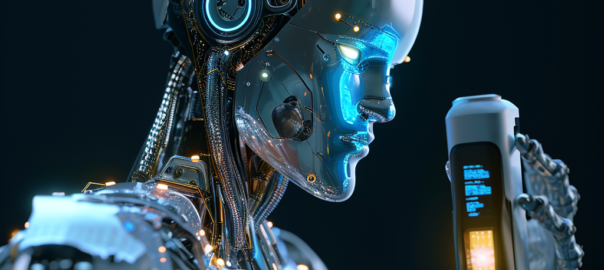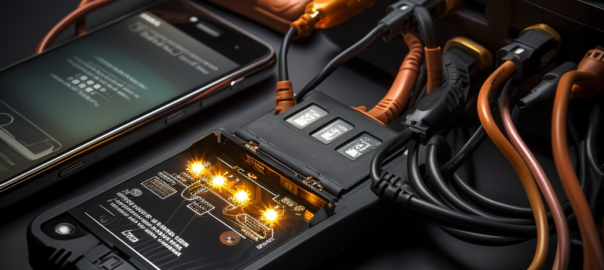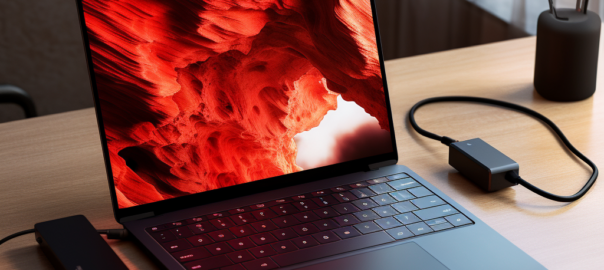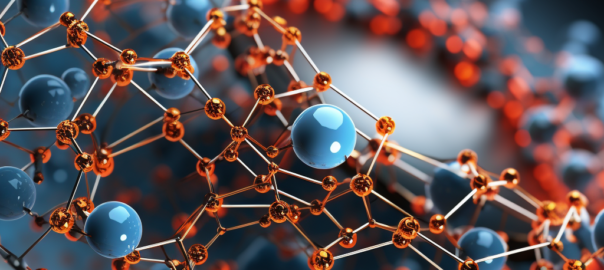Laptops are an essential part of our daily lives, whether for work, study, or leisure activities. However, one common problem that laptop users often encounter is the “AC power adapter type cannot be determined” error. This error message is usually an indication of an issue with the power supply system of the laptop, specifically the AC power adapter. Not only can this issue prevent your laptop from charging properly, but it could also affect the overall performance of your device.
Before diving into the solutions, it’s crucial to understand what an AC power adapter is and how it functions. This knowledge will be instrumental in troubleshooting the problem and possibly preventing it from happening in the future.
| Common Laptop Issues | Frequency of Occurrence |
|---|---|
| Overheating | Common |
| Slow performance | Common |
| Battery not charging | Common |
| AC power adapter error | Frequently reported |
| Crashing software | Less Common |
| Noisy hard drive | Rare |
As the table demonstrates, issues like the AC power adapter error are not uncommon. In the following chapters, we will delve into the reasons behind the error message and provide a detailed guide on how to fix it. Remember, even though the problem might seem daunting at first, most issues can be resolved with the right approach and a bit of patience.

Contents
Understanding the AC Power Adapter
2.1 What is an AC Power Adapter?
An AC (Alternating Current) power adapter is a type of external power supply that converts the electric current from the power outlet into a compatible current for your laptop. This is often necessary because laptops typically require direct current (DC), while the power from a standard outlet is alternating current.
The power adapter serves two major roles: it provides the appropriate level of power to your device, and it protects your laptop from power surges or fluctuations that could potentially harm the internal components. In simpler terms, the adapter acts as a bridge between the power source and your laptop, making sure your device receives a steady, controlled stream of power.
| Component | Role |
|---|---|
| AC power input | Receives the initial alternating current from the power outlet |
| Transformer | Changes the voltage level to the required amount for your laptop |
| Rectifier | Converts the alternating current to direct current |
| Regulator | Keeps the output current steady and protects against power surges |
2.2 How Does an AC Power Adapter Work?
To convert AC from your power outlet to the DC used by your laptop, the adapter uses several internal components. These include a transformer, rectifier, and regulator.
The process begins when the AC power input receives alternating current from the power outlet. This current is then sent to the transformer, which adjusts the voltage level to match what your laptop requires.
Next, the alternating current is passed to the rectifier. As its name suggests, the rectifier rectifies the current, turning it from an alternating current into a direct current.
Finally, the regulator maintains a steady output of direct current, ensuring it stays at the right voltage level. It also serves as a buffer against power surges, protecting your laptop’s sensitive internal components from any sudden influx of electricity.
Understanding the workings of your AC power adapter is the first step towards identifying and resolving the issue causing the “AC power adapter type cannot be determined” error.
Reasons for the AC Power Adapter Error
While the “AC power adapter type cannot be determined” error is generally associated with a power supply issue, the root cause could be due to several factors. Let’s explore the three most common culprits:
3.1 Damaged Power Adapter
Physical damage to the power adapter is one of the most common reasons for this error message. This could be due to wear and tear, accidental drops, or poor handling.
| Signs of Damage | Possible Effect |
|---|---|
| Frayed wires | Inconsistent power supply or adapter not recognized |
| Bent or loose plug | Poor connection with the power outlet or laptop |
| Overheating | Adapter failing due to overheating, interrupting power flow |
3.2 Battery Issues
Sometimes, the issue isn’t with the power adapter but the laptop’s battery. A faulty or aging battery might fail to hold a charge or communicate properly with the laptop, leading to the error message.
| Battery Issues | Possible Effect |
|---|---|
| Old or worn-out battery | Inability to hold charge, leading to power inconsistencies |
| Damaged battery contacts | Poor connection with laptop, disrupting power communication |
| Incompatible battery | Laptop unable to recognize battery, leading to error message |
3.3 System Error
In rare instances, the error might result from a system error within the laptop. These could range from software glitches to issues with the power management system.
| System Errors | Possible Effect |
|---|---|
| Software glitches | Incorrect readings or miscommunication with power adapter |
| Power management issues | Failure to recognize or manage power supply correctly |
Troubleshooting Steps to Fix the AC Power Adapter Error
4.1 Checking the Power Adapter
First, let’s focus on the power adapter. Here are some steps to examine and test it:
Visual Inspection: Check for any obvious signs of damage, such as frayed cables, bent plugs, or scorch marks that might indicate overheating.
Connection Check: Ensure that the adapter is firmly connected to the power outlet and the laptop. Loose connections can interrupt the power supply.
Test with Another Device: If you have access to another compatible device, try using your adapter with it. If the error repeats on the other device, it’s likely the adapter is faulty.
| Action | Purpose |
|---|---|
| Visual inspection | Identify physical damage |
| Connection check | Ensure secure connection |
| Test with another device | Confirm if adapter is faulty |
4.2 Battery Testing
If the adapter seems to be in good shape, the next step is to examine the battery.
Visual Inspection: Look for any signs of physical damage or excessive wear.
Battery Health Check: Most laptops have built-in diagnostics to assess battery health. Run this test to see if the battery is functioning properly.
Try Without Battery: If possible, remove the battery and try running the laptop directly from the power adapter. If the error disappears, it may indicate a problem with the battery.
| Action | Purpose |
|---|---|
| Visual inspection | Identify physical damage |
| Battery health check | Evaluate battery’s performance |
| Try without battery | Confirm if battery is faulty |
4.3 System Diagnosis
Finally, if the adapter and battery both seem fine, it’s time to look into potential system errors.
Power Management Settings: Check your laptop’s power management settings to ensure it’s configured correctly.
Bios Update: An outdated BIOS could cause compatibility issues with the power adapter. Make sure your laptop’s BIOS is up to date.
System Reset: In some cases, a system reset might help clear any potential software glitches causing the error.
| Action | Purpose |
|---|---|
| Check power management settings | Verify correct configuration |
| Update BIOS | Ensure compatibility with power adapter |
| System reset | Resolve potential software glitches |
Each of these steps will help you diagnose the root cause of the error and potentially fix it. If you still experience problems after trying these steps, it might be time to consult a professional or reach out to your laptop manufacturer’s customer support.
Prevention Measures
In order to avoid future occurrences of the “AC power adapter type cannot be determined” error, here are some preventative measures you can follow:
5.1 Handle Your Adapter Carefully
Treat your power adapter with care to avoid physical damage. Keep it away from areas where it could get stepped on, avoid sharply bending the cables, and ensure it’s stored in a dry, cool place when not in use.
5.2 Regularly Monitor Battery Health
Laptops often have built-in tools that monitor the health of the battery. Regularly checking this can alert you to a failing battery before it becomes a significant problem.
5.3 Keep Your System Updated
Regularly update your laptop’s software, including its BIOS, to avoid potential compatibility issues with the power adapter.
5.4 Use Compatible Parts
Always use a power adapter and battery that are compatible with your laptop. Using incompatible parts could lead to errors or potentially damage your device.
| Prevention Measure | Reason |
|---|---|
| Handle adapter carefully | Avoid physical damage |
| Monitor battery health | Detect failing battery early |
| Keep system updated | Avoid software compatibility issues |
| Use compatible parts | Prevent errors and potential damage |
By following these prevention measures, you can greatly reduce the risk of experiencing the “AC power adapter type cannot be determined” error.

Conclusion
Navigating the tech maze can be intimidating, especially when faced with error messages like the “AC power adapter type cannot be determined”. However, equipped with the right knowledge and a systematic approach, you can overcome these hurdles. Understanding the role of your power adapter, the reasons behind potential errors, and how to troubleshoot them are crucial first steps. By following the preventive measures shared, you can also avoid such issues in the future. Remember, careful handling of your device and keeping it updated are key to maintaining a healthy laptop.
Frequently Asked Questions (FAQs)
Q1: What is the role of an AC power adapter?
A: An AC power adapter is an external power supply that converts the AC (alternating current) from a power outlet into the DC (direct current) required by your laptop. It also serves as a protection against power surges.
Q2: What does the “AC power adapter type cannot be determined” error mean?
A: This error typically indicates an issue with the power supply system of your laptop, and it often stems from problems with the power adapter, battery, or a system error in the laptop.
Q3: What are the common causes of the AC power adapter error?
A: The most common causes of this error are a damaged power adapter, issues with the laptop’s battery, or a system error within the laptop.
Q4: How can I fix the “AC power adapter type cannot be determined” error?
A: You can start by inspecting your power adapter for physical damage, testing it with another device, and ensuring it’s properly connected. If the adapter is not the issue, check your battery’s health and try operating the laptop without the battery if possible. If the problem persists, investigate potential system errors, such as power management settings, outdated BIOS, or software glitches.
Q5: How can I prevent the AC power adapter error from occurring again?
A: To avoid future instances of this error, handle your adapter carefully, regularly monitor your battery’s health, keep your laptop’s software and BIOS updated, and always use parts that are compatible with your laptop.










